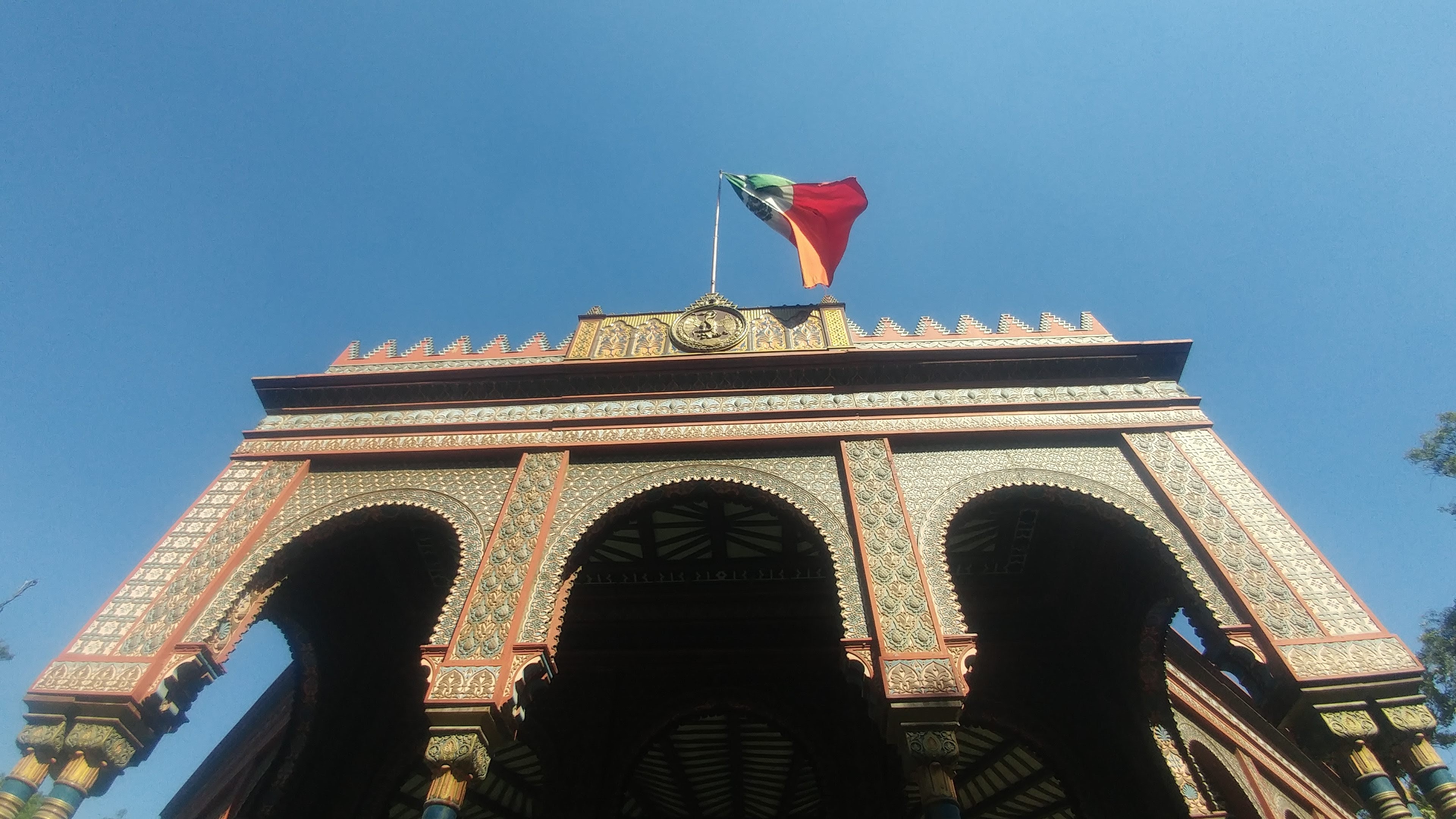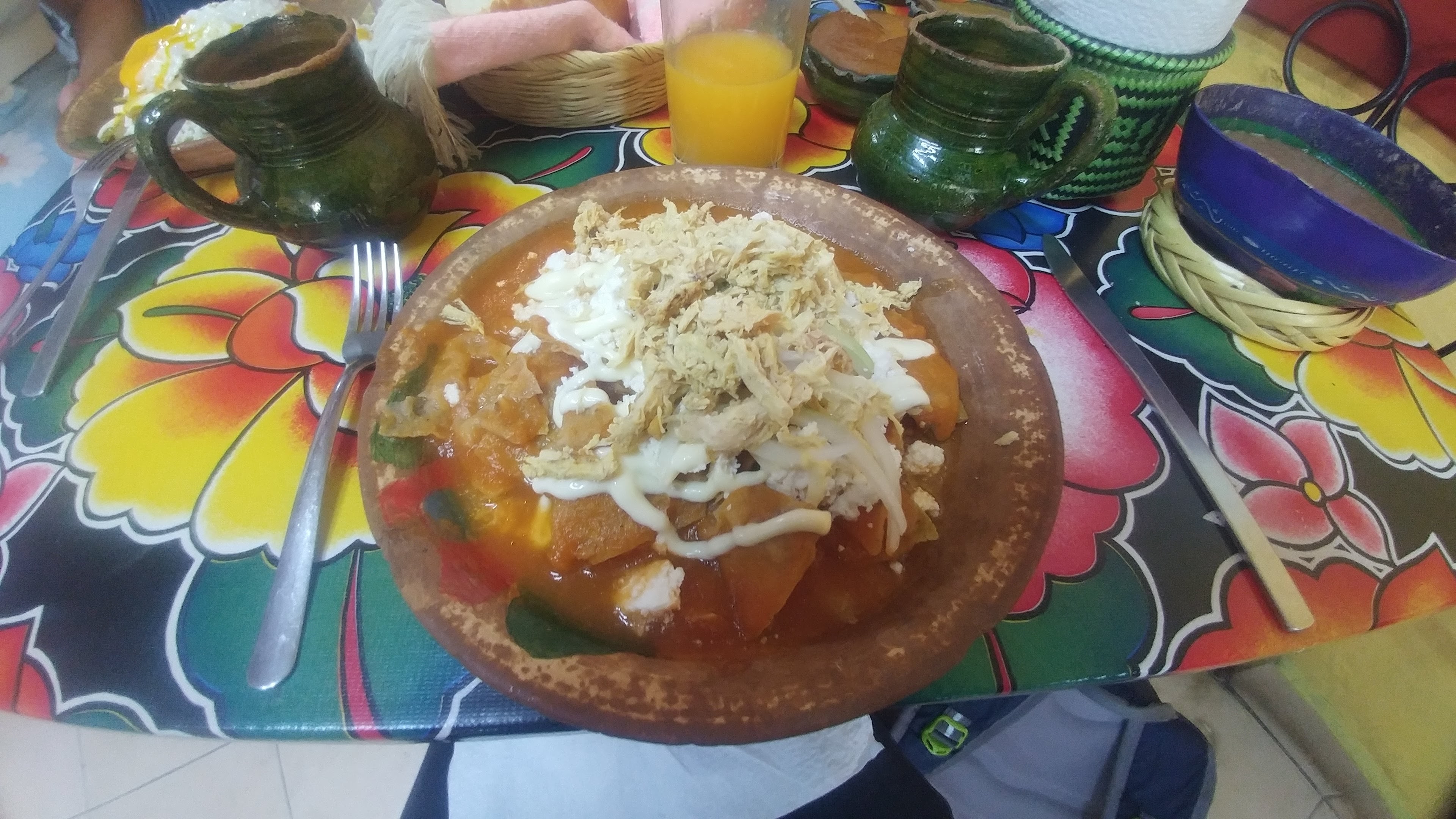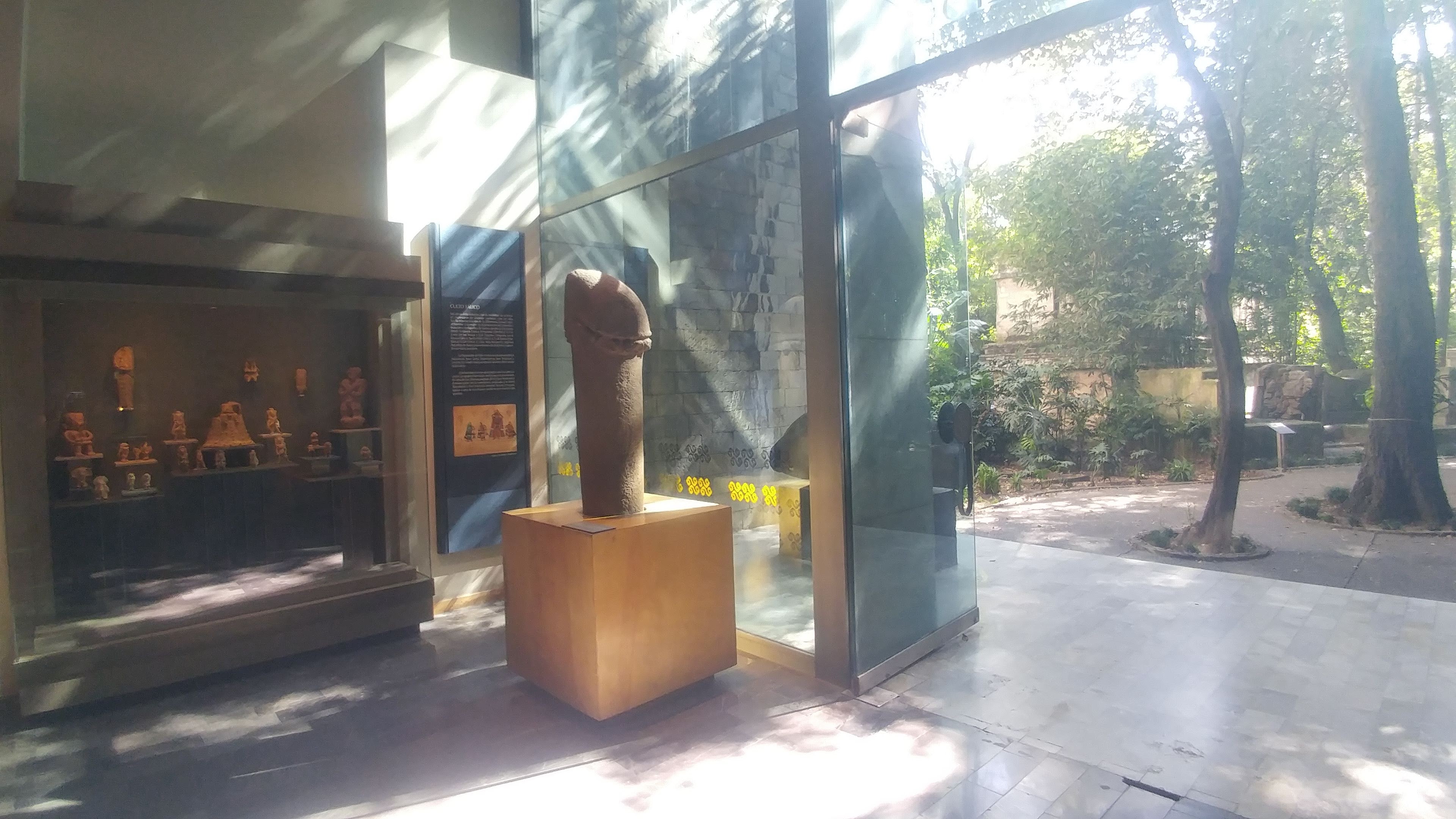This is the day when I make servers angry all day without understanding why. I think it has to do with tending to order the cheapest items, but (a) I am ordering what I want, and (b) I tip like a millennial, so it evens out.
I started out with some coffee at the park while waiting for Anna to wake up. Once she finally did, I paid the waiter, who was glad to see the back of me, and hopped on the metrobus (one of those buses that has dedicated lanes on the road and elevated stations so it functions kind of like a subway) to go to Santa María la Ribeira, the very Mexican neighborhood where she lives. We took a stroll through the park, which is home to the ornate Moroccan Kiosk, and ended up at Anna’s favorite Oaxacan breakfast place, where you can get a big plate of chilaquiles, a cafe de olla, and a fresh-squeezed orange juice for 90 pesos, or about $4.50. In other words, it’s my new favorite breakfast place, too. I added on a tejate, a traditional Oaxacan drink that’s similar in concept to atole but is served iced instead of hot, and in which a key ingredient is ground-up mamey seeds. I could have stayed at that cafe forever, and we almost had to, because both the waiters seemed to be making a game out of ignoring us. No matter—I came for the food, not for them.




After breakfast, Anna was off to play rugby, and Kirsten was headed to a date, so I went walking through Parque Chapultepec, which is bigger than Central Park and houses several museums, including the renowned Museum of Anthropology. Since it houses the largest collection of pre-Hispanic art in the world, I worked hard to pace myself and hopefully stave off museum fatigue, to which I am prone. The museum is organized around a sprawling central courtyard with a concrete ceiling that is supported by a single massive column/fountain hybrid (presumably installed and maintained by the same government that’s constantly preaching about not wasting water). 23 exhibition rooms, organized by region or society, surround the courtyard, and outside each of those is a garden housing plants and replicas of artifacts, including some whose originals Nathan and I saw last year in the Yucatan.

I was surprised at the way that the exhibits were interpreted. Instead of identifying each artifact with a date, name, and location, as is typical in such museums (in my admittedly limited experience), there was just a paragraph or two explaining the general significance of the items next to each case. I wondered whether this was a stylistic decision (after all, does it really matter that this phallus sculpture was from 1400 near Teotihuacan, and this other one was from 1430 from next-to-Teotihuacan?), or an artifact of something about the way that archaeological records were/weren’t kept during early excavations. I’m going to go ahead and guess that it’s the second one, and that it’s Spain’s fault. That seems to be the trend.

After an hour or two, I was just about to fall over from looking at stone serpents and bowls whose purpose was “unknown, but possibly sacrificial” (does everything have to be sacrificial just because it’s Aztec? They had to eat their cornflakes out of something, after all). That’s when I made an exhilarating discovery: a staircase! Turns out some of the rooms had 2 floors, with ancient stuff on the bottom, and a more modern perspective on the top. That part was much more interesting. I learned about modern-day crafts, looked at replica houses, and learned a lot about the social structure and issues affecting indigenous communities around the country. For instance, I learned that some communities expect men to dedicate a day each week to community projects, and this is how roads get maintained, public buildings get built, etc. The obligation is so strong that if someone isn’t able to come for whatever reason, he’s supposed to send one of his children or, failing that, hire a worker to replace him for the day.
An interesting aspect of visiting Mexican museums on the weekend is that many of the major museums in the city are free to citizens and residents on Sundays, a fact that teachers use to full advantage. Both the Museum of Anthropology and the Templo Mayor were packed with moms toting their kids toting their worksheets, and I enjoyed eavesdropping on the moms’ explanations, dumbed down to a language level and knowledge-of-Mexican-history level that I could relate to. I particularly enjoyed one mom’s explanation to her child of how and why they live in a big city with cars and hospitals, but there are people in the south that live in thatched houses and cook over a fire. “But why, mamá?” “Because they don’t have the opportunities that we have, mi vida.” (Sidenote: Language aside, it’s difficult to distinguish between the terms of endearment used by Mexican mothers to their children and Khaleesi to Khal Drogo).
By the time I got through the museum, my feet were throbbing. I took a seat on the sprawling plaza in front of the museum to plan my next move against a backdrop of blue umbrella-ed food stalls (Street corn! Prepared chicharron! Popsicles! Chili-powdered tamarind!), Aztec drums, and cooling trees. I decided to nix my original plan of heading north–away from home–to Polanco (Mexico City’s ritziest neighborhood), lest my feet fall off en route. Instead, I decided on a leisurely path that would eventually lead me to home, a chair, and some leftovers.
But wait—what’s this? Oh, neat, just beyond the first line of trees separating the museum from Parque Chapultepec is the pole used for the flying game, a ceremony in which… well, it’s easier to show than to explain. Suffice to say, originally the ritual was developed as an offering to end a particularly harsh drought. Four men competed at a time, and the prize went to the one whose costume and posture during descent were most birdlike.
For the most part, only men have participated in the flying game. There was one master of the sport who started training women, which upset a lot of people who clearly need a real problem to worry about. He died in a flying-game-related accident in 2006, which his critics saw as him getting what was coming to him. I can’t disagree, but I’m going to go out on a limb that it had less to do with gender inclusivity and more to do with a certain cavalierness toward personal safety.
Anyway, as I took in the impressive height of the pole, I noticed a man in traditional dress about halfway up. At the top, four more men waited, perched opposite each other facing in, for the last man to arrive. What luck! Once the final man had taken his position at the center of the platform, he started to play a repetitive tune on his flute and to beat a tiny drum. The four men around the edges of the platform tipped over the sides and began to spin. As they went around and around the ropes attached on one end to the flyers’ waists and the other end wrapped around the top of the pole slowly unwound, giving the flyers time to assume various upside-down bird postures as they descended.


I was so enthralled that when a guy came around with a tip basket, I miscalculated and gave him way too much. There are worse things, I guess.





Leave a comment